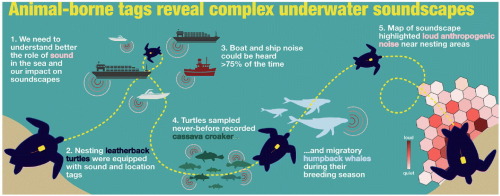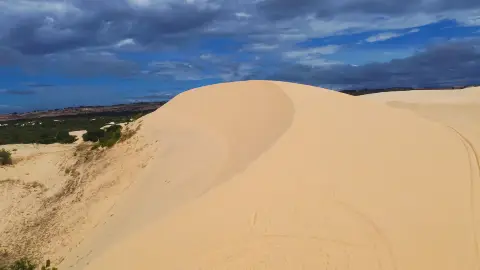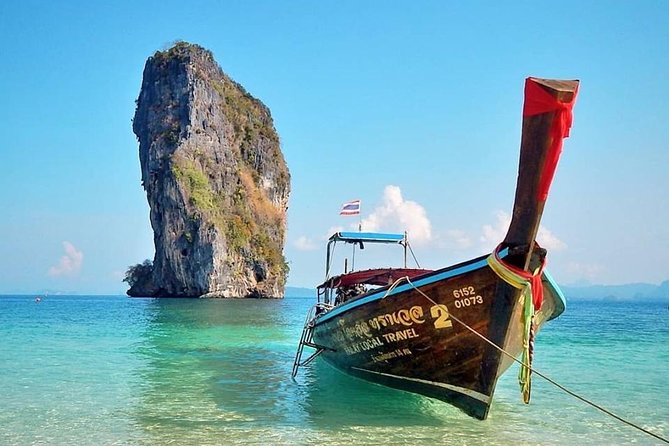Hear the Harmony: Discovering Auditory Sanctuaries on Earth's Quietest Beaches (for vistalocation.com)

Escape the cacophony of modern life! This isn't just another list of beautiful beaches; it's a journey into the world of auditory travel, where the sounds of nature take center stage. We're diving deep to uncover shores where the waves, the wind, and the unique geological features create soundscapes that soothe the soul. Join us as we explore the auditory wonders of Glass Beach in California, Singing Sands Beach in Scotland, and Railay Beach in Thailand, and learn how to cultivate auditory mindfulness before, during, and after your journey.
Pre-Trip Auditory Priming: Preparing Your Ears for Tranquility
Before you even pack your bags, start preparing your auditory senses for the serene soundscapes ahead. For two weeks prior to your trip, integrate ambient nature sounds into your daily routine. Think of it as a sonic cleanse! Apps like Noisly (for blended nature sounds) and Endel (for personalized auditory experiences) can be incredibly helpful.
Dedicate just 15 minutes each day to mindful listening. Set a timer, close your eyes, and consciously focus on identifying individual sounds within the mix. Is that the rustling of leaves? The gentle patter of rain? The distant call of a bird? This practice will heighten your auditory awareness and make your beach experience even richer.
Soundscape Adventures at Three Unique Beaches: Acoustic Beach Experiences
Glass Beach (California): The Clinking Symphony of Sea Glass
Imagine the gentle clinking and tinkling of millions of sea glass pebbles as the waves caress the shore. Glass Beach in Fort Bragg, California, isn't just a visual spectacle; it's an acoustic beach experience that's utterly unique. The rounded pieces of glass, remnants of a former trash dump smoothed by years of ocean tumbling, create a mesmerizing soundscape.
To truly immerse yourself in the soundscape, consider bringing a hydrophone – an underwater microphone. Affordable options are available on Amazon. Record the underwater sounds of the glass being tumbled by the waves. Afterward, analyze your recordings using free audio editing software like Audacity. What frequencies are most prominent? How do they differ from typical sandy beach sounds? Exploring these sonic nuances will deepen your connection to this extraordinary place.
Singing Sands Beach (Scotland): The Mysterious Squeak of Sand
Prepare to be amazed by the squeaking sand at Singing Sands Beach Scotland sound! Located on the Ardnamurchan Peninsula, this beach, also known as Camas Sgiotaig, emits a high-pitched sound as you walk across it. The phenomenon is caused by the unique geological composition of the sand grains – specifically, their rounded shape and high silica content.

Before you go, research the precise geological makeup of these grains. The specific size and composition are crucial to creating the sound. Once there, document the sound intensity at different points on the beach using the SoundPrint app. Note how the sound changes depending on your location and the moisture content of the sand.
Railay Beach (Thailand): A Symphony of Nature and Noise
Railay Beach Thailand tranquility offers a juxtaposition of natural sounds – waves crashing, monkeys chattering, longtail boats droning, and tourists chattering. This is where citizen science comes into play, allowing us to understand and mitigate the impact of human activity on the natural soundscape.

Download the SoundPrint app and meticulously record sound levels at different times of the day, paying particular attention to the impact of boat noise. Research the impact of boat noise on dolphin communication in the area. Several studies have explored this relationship, such as this article about noise pollution and its impact on marine mammals: Ocean Noise: Potential impacts on marine mammals. Note how the anthrophony compares to the biophony and geophony of the beach.
Becoming a Citizen Scientist for Soundscapes: Eco-acoustics Tourism
Contribute to a global understanding of soundscapes by becoming a citizen science soundscapes advocate. Download and use the SoundPrint app to contribute to a global map of sound levels, helping identify noise pollution hotspots. Document your auditory experiences in a travel journal, noting specific sounds, their intensity (measured in decibels), and your emotional response. Share your findings on social media using #AuditoryTravel and #SoundscapeCitizenScience. By sharing your experiences, you can raise awareness about the importance of preserving natural soundscapes and encourage others to participate in soundscape monitoring.
Ethical Considerations and Marine Life: Sustainable Auditory Tourism
Noise pollution has a significant impact on marine life, particularly dolphins at Railay Beach, who rely on sound for communication and navigation. Excessive boat noise can interfere with their ability to find food, communicate with each other, and navigate their environment. Therefore, promote tour operators committed to sustainable auditory tourism and low-noise transportation, such as those using electric boats or kayaks, like Railay Eco Tours. Respect the natural soundscape to protect marine ecosystems. Educate yourself about the impacts of noise pollution before you go and be mindful of your own contributions to the sound environment.
Post-Trip Auditory Integration: Mindfulness & Travel
Continue your auditory mindfulness journey even after you return home through mindfulness & travel integration. Use binaural beats and nature sounds from apps like Calm or Headspace for stress reduction and relaxation. Aim for at least 20 minutes of daily listening to maintain a connection with the calming soundscapes of your travels. Consider creating a playlist of your favorite beach sounds to revisit the serenity you experienced. This can be a powerful way to reduce stress and promote overall well-being.
Conversion Optimization: Quiet Beaches Vacation
If you're planning your next quiet beaches vacation, consider an auditory travel package.
Beaches aren't just for seeing; they're for hearing. Embrace auditory travel, become a citizen scientist, and help protect the precious soundscapes of our planet. Discover beaches with restored auditory harmony by actively participating in soundscape preservation and mindful listening. Let vistalocation.com guide you to your next unforgettable auditory adventure. Start planning your quiet beaches vacation today!